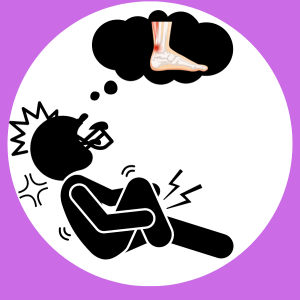
On September 11, after taking just four snaps in his first game as a New York Jet, quarterback Aaron Rogers was carted off the field with a completely torn Achilles tendon. Just a little over a month later on October 29, Minnesota Vikings quarterback Kirk Cousins would tear his Achilles in their game against the Green Bay Packers. This made me wonder why Achilles tears in NFL quarterbacks have become so common recently.
The first thing I thought of were the fields. In the NFL, 15 of the fields use natural grass while the other 15 use synthetic grass or turf. But, according to an NBC News article titled “Turf wars: Aaron Rodgers’ injury reignites debate over artificial grass use,” seven out of the 10 stadiums with the highest injury counts from 2017-2022 use artificial grass. On the other hand, 7 out of the 10 stadiums with the lowest injury counts use natural grass. Both Aaron Rogers and Kirk Cousins suffered their Achilles injuries playing on a turf field.
According to an ABC News article called “What does the science say about the grass vs. turf debate in sports?” a study that analyzed 4,801 NFL foot and leg injuries during the 2012-16 seasons found that 16% more injuries per play occurred on turf fields as opposed to grass. This raises the question: should all NFL teams switch the natural grass fields?
The short answer is yes. Turf is more rigid and less forgiving than natural grass, putting stress on the joints and ligaments of NFL players, and consequently leading to injuries. Natural grass also allows for the players’ cleats to have a better surface to grip, and lessens injuries resulting from slipping and sliding. Grass fields are simply safer than turf fields, and the NFL should be taking every step possible to protect its players.
The next thing that came to mind in regards to Achilles injuries in quarterbacks was their age. Since 2002, the average age of starting NFL quarterbacks has fallen between 27-30. The average age for NFL quarterbacks in 2023 is about 28 years old. According to Mayo Clinic, the peak age for an Achilles tendon rupture is 30-40 years of age, and men are five times more likely to sustain this injury than women. This means that, on average, most NFL quarterbacks are on the cusp of being the prime age for suffering an Achilles tear.
Aaron Rogers is 39 years old, and Kirk Cousins is 35, which means that both of them suffered an Achilles injury at the time in their lives when they were at the greatest risk.
So what’s the fix for this? Many people feel that there really isn’t one aside from putting an age limit on the quarterback position. In order to decrease injuries in quarterbacks, that limit would probably be set right at 30 years old. But then what would happen to healthy quarterbacks still playing at or past that age? Would they be forced to retire or switch positions? That wouldn’t be fair to them, or the teams they would be playing for. Putting an age limit on the quarterback position would definitely cause more problems than it would solve in the NFL, and I don’t think this is a good solution.
The last thing that I thought of was how quarterbacks are tearing their Achilles tendons. According to USF Health, an Achilles injury is typically caused by a “sudden, forceful contraction of the calf muscle” that causes the tension on the Achilles to become too great, so it ruptures.”
While trying to escape a sack, Aaron Rogers’s foot got caught on the turf as his body shifted forward which overstretched his Achilles and caused it to rupture. In a similar fashion, Kirk Cousins planted his foot while stepping up in the pocket to avoid a sack, and tore his Achilles. In both instances, the Achilles tear was caused by quick, sudden movements.
The thing is, movements like these are a part of playing quarterback. Stepping up in the pocket and escaping sacks in something that quarterbacks are expected and required to do on a nightly basis.
So, how do you prevent Achilles tears from happening as a result of these mechanisms of injury? You can’t, not without changing how the quarterback position as a whole is played, as well as changing how defenses are allowed to play against quarterbacks. Neither one of these options are plausible or practical, so that is another possible solution out the window.
The best thing the NFL can do to help prevent Achilles injuries in quarterbacks is to switch to natural grass fields. There is a lot of data supporting the claim that grass fields are safer than turf fields, and while there are other factors that contribute to Achilles injuries in quarterbacks, there aren’t any other feasible solutions. Protecting its players should be the NFL’s main priority, and implementing grass fields in all stadiums will certainly help that.

